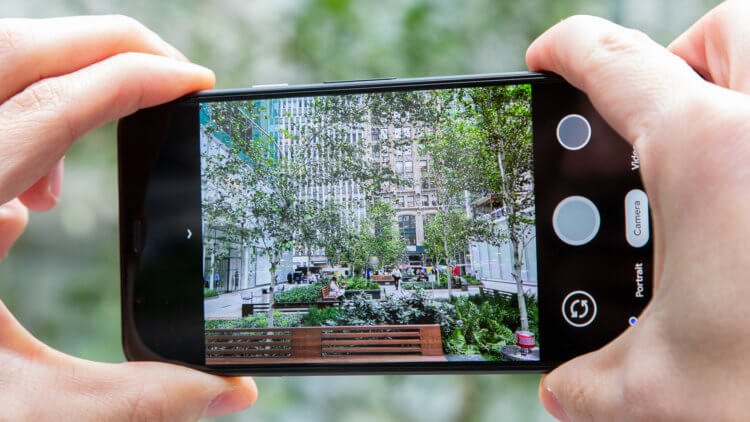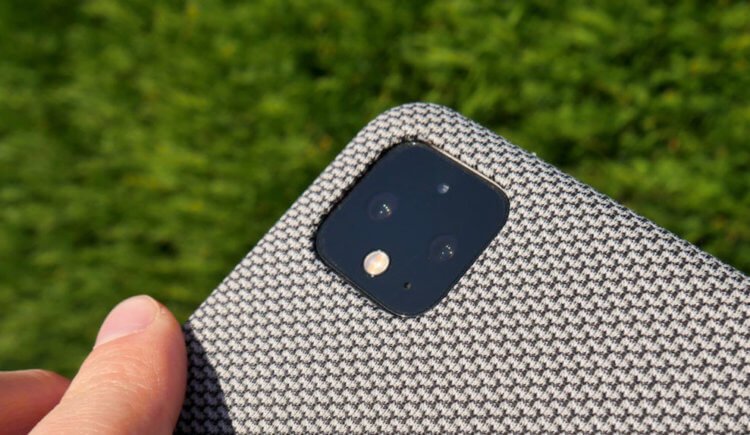The camera is a key component of the vast majority of Android flagship smartphones today. Perhaps there is not a single manufacturer left that has not reoriented to the production of camera phones. As a result, 5-module imaging systems with incredible resolution, 3D sensors and lenses for all occasions have become an absolute norm. However, precisely because of the abundance of functional elements, it has become much more difficult to ensure the performance of such cameras than before. Don't believe me? Then here's a good example for you.

Has your smartphone camera started to shoot worse? The cover may be to blame
Some time ago, the owners of Huawei P40 and Huawei P40 Pro, which are considered the main camera phones on the market, began to complain about the decrease in the quality of shooting. The reasons were voiced very different, but the majority considered the problems in the software part caused by one of the latest updates as the main one. Moreover, the failure was clearly of a software nature – the camera could not adjust focus for a long time, and the pictures were blurry regardless of the shooting mode used.
Why the smartphone camera has become bad at shooting

That's why you shouldn't use unofficial cases.
Then the developers began to dig, but when they did not find any failures in the smartphone's firmware and found out that a manufacturing defect does not entail such a result, they decided that they were probably just looking in the wrong place. However, after carrying out a lot of tests in laboratory conditions, the engineers Huawei still came to the true reason for the poor image quality. As it turned out, it was not caused by firmware failures or a manufacturing defect of the camera module, but by unofficial covers that users wore on their devices.
To believe that this is really so, frankly, is not difficult, because Huawei did not make such a statement out of the blue. The company actually conducted a study of the cases that are on sale, studied their design and clearly showed what exactly causes the camera to malfunction. As you can see in the photos below, some of the cases overlap the sensors responsible for shooting, which is why the camera cannot focus normally and give a high-quality result. Other covers do not cover the sensors at all, but leave too little space for them to work stable and correctly.
Why does the camera shoot worse in a case?

The cover prevents the matrix from correctly perceiving side light
However, two smartphones can hardly be called a relevant sample. Another thing is that not only Huawei P40 and P40 Pro suffer from such problems, but also many other smartphones. Most of all, the problem of low-quality images is common among owners of devices with ToF sensors. Many manufacturers use them not only for building a virtual map of space, but also for focusing, and unofficial cases that do not take into account the design features of smartphones often either cover them completely or partially, which affects the final result.
However, a detailed study of the problem showed that sometimes even the official cases, which are designed taking into account all the features of smartphones, interfere with photo and video shooting. Renat Grishin, editor-in-chief Android of Insider.ru, who uses iPhone as his main smartphone, also notices this problem when using the Smart Battery Case from Apple. Therefore, he says, if he needs to get a high-quality shot, he prefers to take off the case and shoot without it.
How do photos differ in a case and without a case?

On the left – a photo in a case, on the right – without a case
I have a branded case Apple with a battery. Fits very tightly, all cutouts fit perfectly. But when you shoot a photo or video with the rear camera, the effect is as if the whole camera is in fingerprints. A sort of blurring … But as soon as you remove the cover, the effect disappears. I associate this with the fact that the camera needs light not only 'in the forehead', but also from the side. And due to the fact that the camera is slightly recessed into the case, the light becomes less and the quality of the shooting decreases. In normal handheld shooting, this is not noticeable. But if you want to make a more or less artistic shot, you always have to take off the cover, alas, – says Grishin.
I also think that the reason is that the case, even if it does not overlap the functional sensors, interferes with shooting by simply rising above the lens, encircling it from all sides. Because of this, the matrix receives less side light, and the flash, if used, can bounce off the inner walls of the accessory and light up the frame. This is equally true for transparent silicone cases as well as for heavy leather or plastic cases. Therefore, if you want a high-quality picture, take off the cover and, forgive the paradox, shoot.
